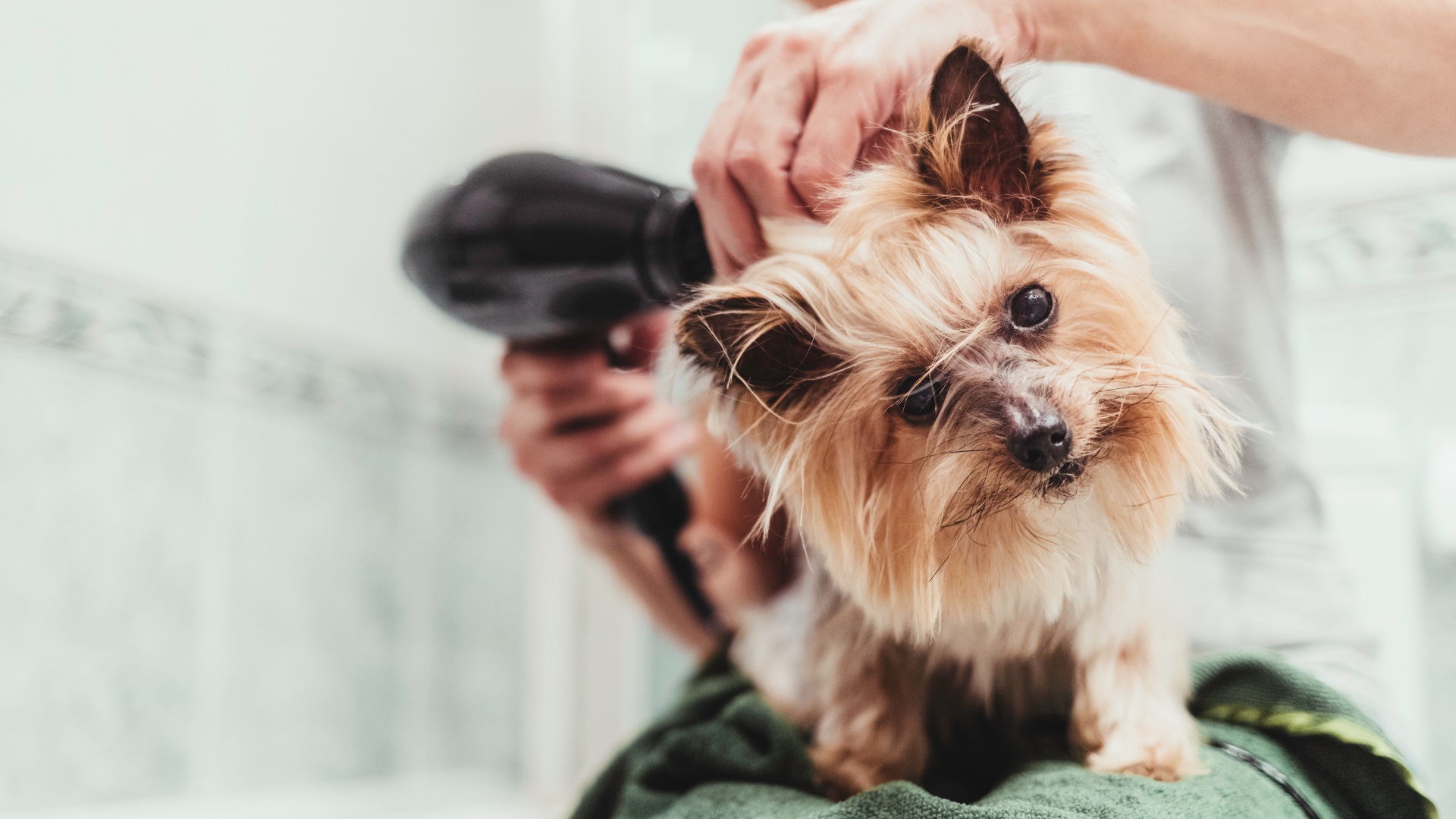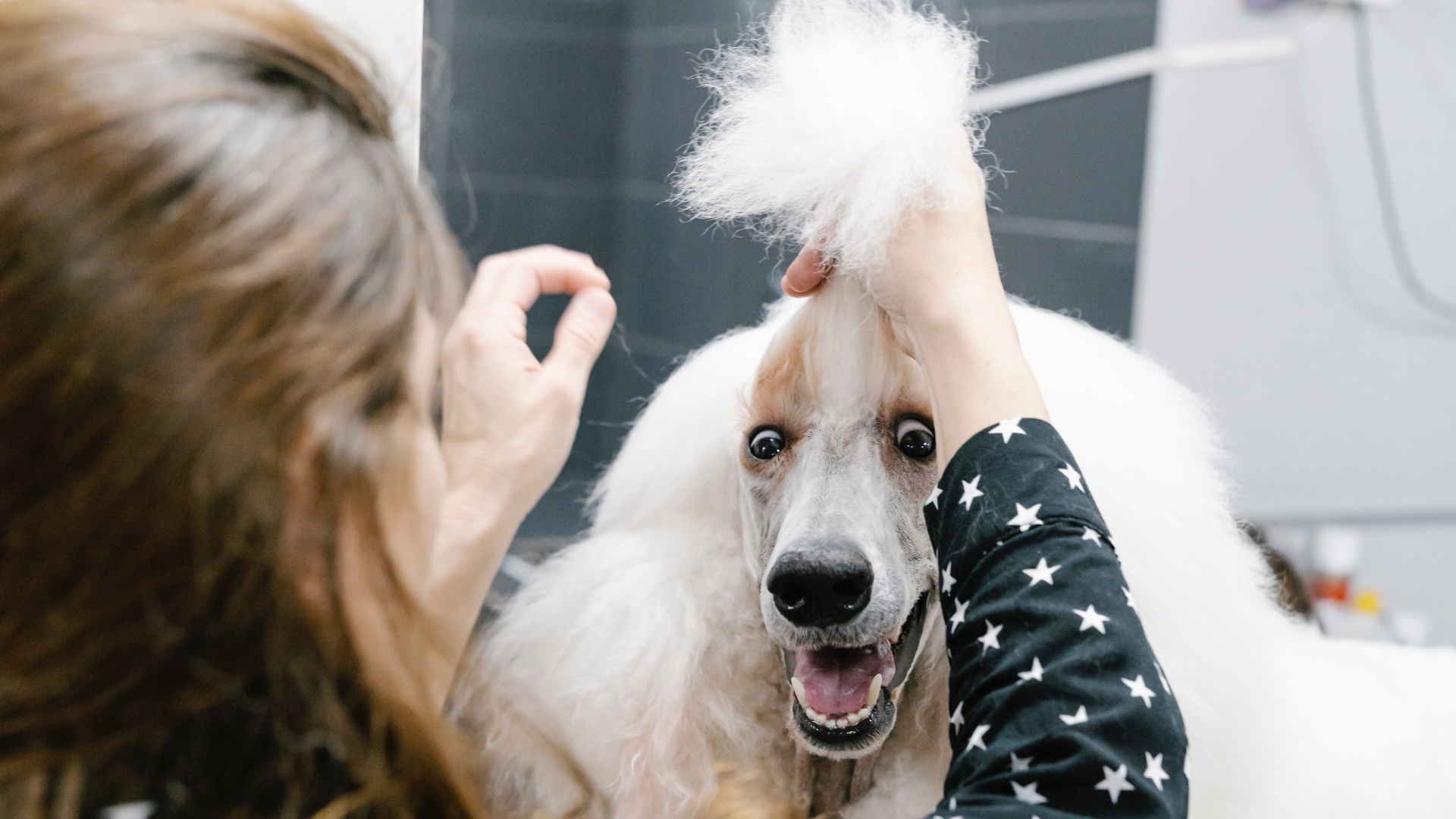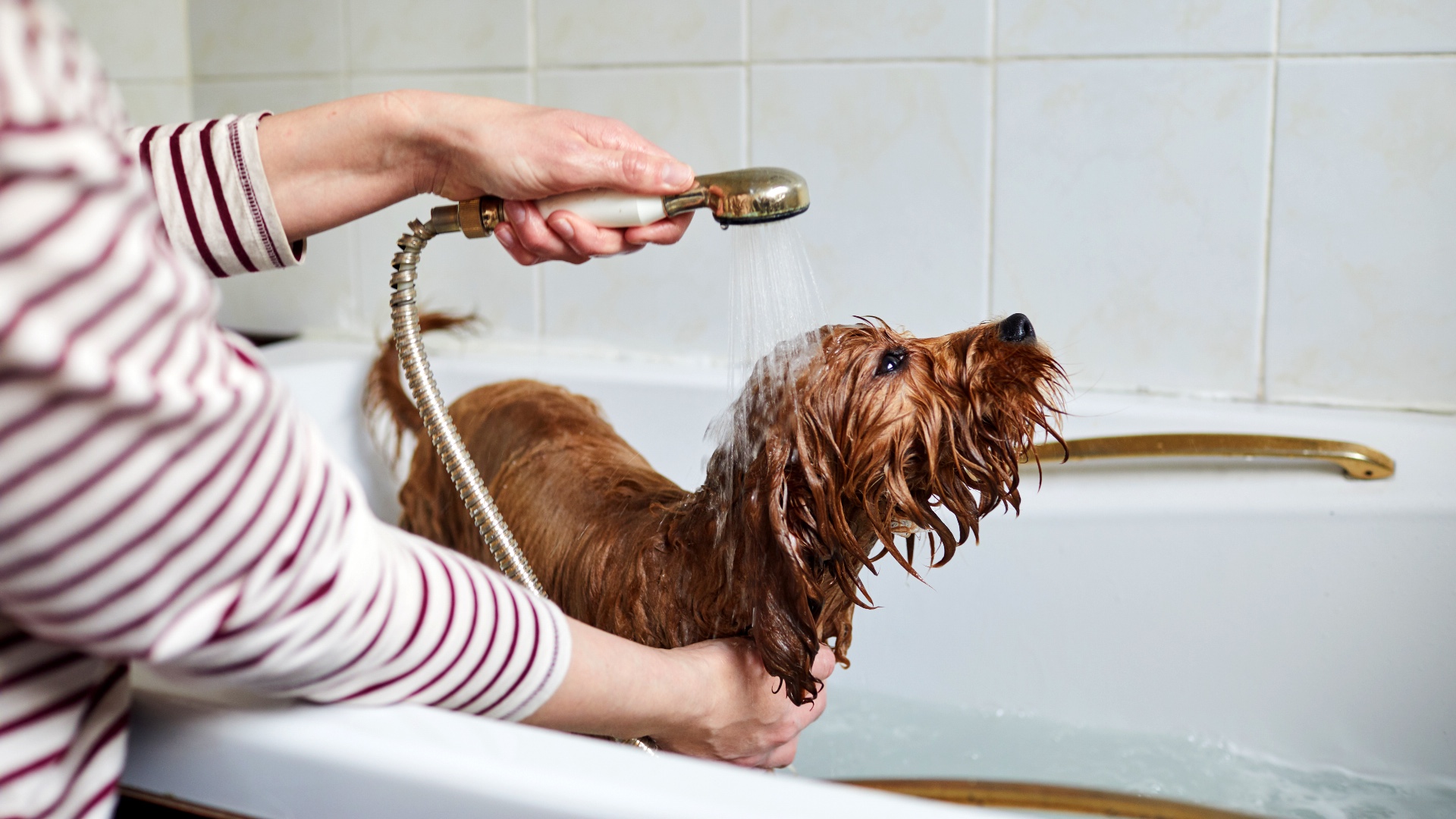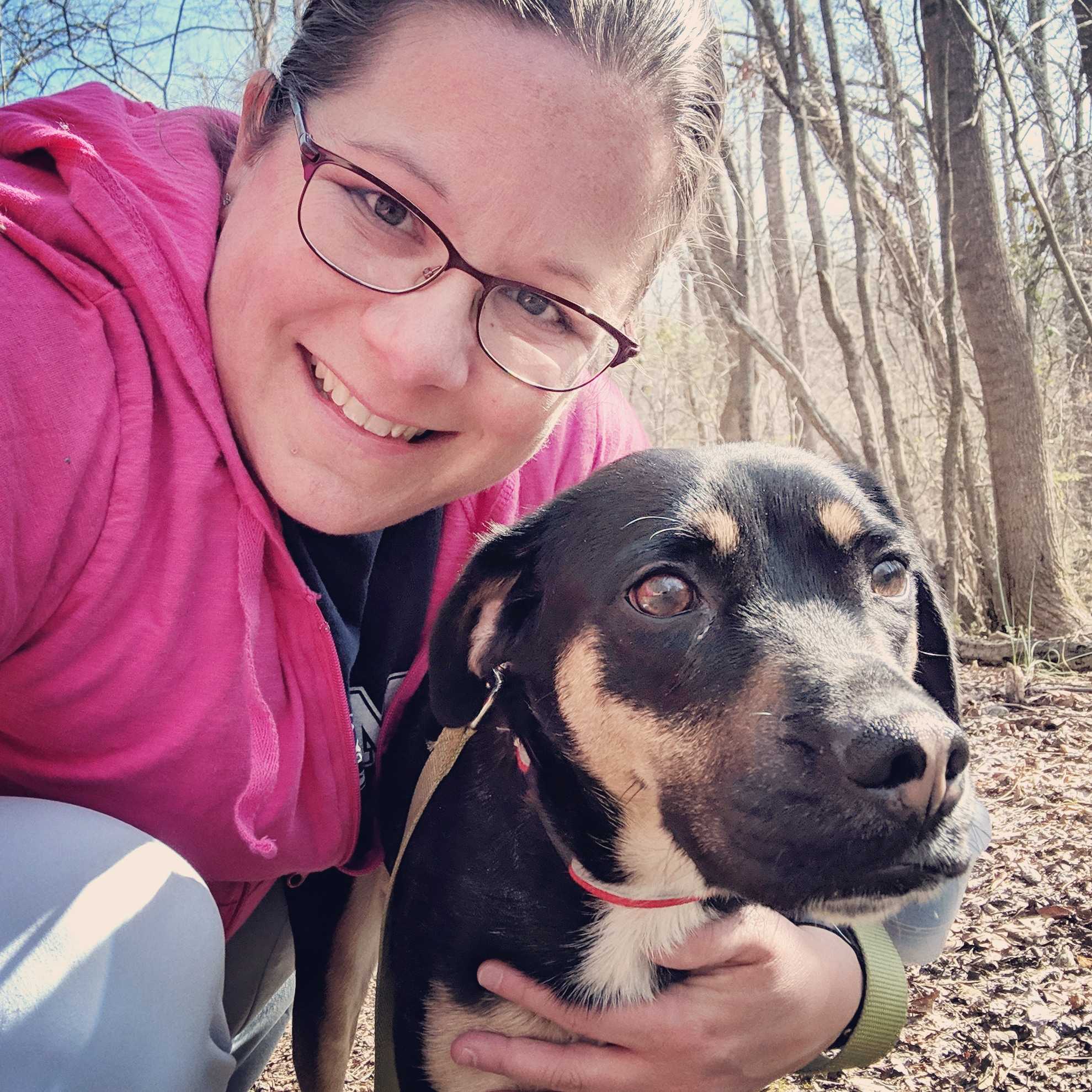10 dog grooming tips from a vet
Groom at home or leave it to the professionals? These dog grooming tips will help you make the right decision for you and your canine.

While regular trips to the grooming salon are a way of life for many dog owners, following some simple dog grooming tips can help you safely and effectively groom your canine companion at home.
Before embarking upon a home grooming program, however, it’s important to do your research. Think carefully about your dog’s personality, grooming requirements, and your patience level to determine whether home grooming is a realistic option for you. If so, be sure that you have the necessary supplies, like one of the best dog grooming kits, and knowledge to groom your dog effectively.
Why does your dog need to be groomed?
Routine grooming is an essential component of proper dog care. Grooming isn’t simply a cosmetic issue; a lack of grooming can negatively impact your dog’s health and quality of life. Without regular grooming, your dog’s toenails could grow into his paw pads, knots and mats could tug on his skin, and a heavily matted coat can contribute to skin infections.
Although your dog’s grooming needs may vary considerably, depending on breed and lifestyle, all dogs require some degree of regular grooming to remain clean and free of health issues.
What do professional dog groomers use?
Most groomers have a variety of professional shampoos available, so that they can select the best dog shampoo for each pups unique coat. After they bathe a dog, they often place the dog under a professional-grade hair dryer. This dryer will quickly blow dry a dog’s coat while the dog remains confined to a small kennel area.
Once they're dry, dogs are typically placed on a grooming table. This table holds the dog at the groomer’s eye level, while also incorporating a restraint that keeps the dog from getting away. Long coats may be trimmed with a combination of scissors (available in many different sizes) and clippers (also available in different blade sizes for different coat lengths).
Groomers also typically have a variety of the best dog nail clippers available, so that they can select the right pair of clippers based on the dog’s size and groomer’s preference.
Get the best advice, tips and top tech for your beloved Pets
Home grooming for dogs: 10 tips for dog owners

If you are considering grooming your dog at home, it is important to be knowledgeable about grooming techniques and supplies. Consider the following 10 tips for at-home dog grooming:
1. Consider your dog’s temperament and grooming requirements
If your dog is extremely high-strung and unwilling to stand still for more than a minute or two, performing extensive home grooming may be a challenge. A quick bath and nail trim is one thing; performing a complicated poodle cut on a high-energy, wiggly dog may be an entirely different matter!
While it’s certainly reasonable for you to give home grooming a try, don’t feel bad if you ultimately decide that it’s easier to pay a professional groomer.
2. Focus on daily maintenance
If your dog has a long coat, daily brushing with one of the best dog brushes will significantly reduce your dog’s grooming requirements. This will make grooming day less stressful for both of you. Daily brushing will also accustom your dog to handling, making them more receptive to the handling that accompanies grooming.
3. Use positive reinforcement
Even a dog that is accustomed to regular handling may dislike standing still for grooming. Invest the time and energy to make grooming as enjoyable for your dog as possible. Reward your pup with tasty dog treats intermittently throughout the grooming session. If you use a soft treat, like peanut butter, you can even smear small amounts of the treat on the side of your bathtub or on your grooming surface; as your dog licks the treat off the surface, they will be more likely to remain still for grooming!
4. Bathe your dog with an appropriate dog shampoo
While you might think that human shampoo would be a more gentle option than pet shampoo, humans actually have more oils on their skin and hair than dogs. This means that human shampoo is often too drying for a dog’s skin, in addition to not being properly pH-balanced for dogs.
Purchase a shampoo that is specifically made for dogs. If your dog has skin allergies or other skin conditions, ask your veterinarian to recommend a prescription shampoo that will specifically address your dog’s issues. While bathing your dog, take care to keep shampoo out of the eyes; you may want to consider using a tear-free puppy shampoo.
5. Check your dog’s skin carefully during bathing
As you are bathing your dog, take the opportunity to perform a detailed, hands-on inspection of your dog’s skin. Examine your dog’s skin using your eyes and your hands, looking for wounds, inflammation, and any new lumps or bumps.
6. Be sure to rinse your dog thoroughly

Residual shampoo can irritate your dog’s skin, predisposing them to hot spots and other skin conditions. Rinse your dog thoroughly, using lukewarm water.
7. Clean your dog’s ears thoroughly after bathing
Despite your best efforts to keep the ears dry, water may enter your dog’s ear canals during bathing. This residual moisture can predispose your dog to ear infections. Therefore, it’s always best to clean your dog’s ears with a commercially-available dog ear cleaner after bathing. Not only does this provide you with an opportunity to remove water and debris from the ear canals, it also allows you to check your dog for any signs of an ear infection. If you notice a foul odor to the ears or excessive debris, contact your veterinarian.
8. Trim your dog’s nails carefully
There are a variety of nail trimmers available for dogs, ranging from double-bladed clippers to guillotine clippers. Any of these clipper types can be effective, so you may want to experiment to see which is the most comfortable for you and your dog.
When clipping your dog’s nails, your goal is to remove just the tips of the nails, avoiding the quick. You may want to keep some styptic powder on hand, especially if your dog has dark nails, so you can stop bleeding in the event that you nick your dog’s quick.
9. Avoid or minimize the use of scissors when trimming your pet’s hair
As a veterinarian, I’ve treated a number of pets who had their skin cut with scissors when their owners were attempting to remove a mat or tangle. Whenever possible, use pet hair clippers instead of scissors. They are less likely to create a significant cut in the skin. If you need to use scissors, use extreme caution and do not do so unless you a
10. Don’t bathe your dog too often
More is not always better! In general, most dogs should be bathed no more than once monthly. Overbathing can dry your dog’s skin and coat out, leading to skin irritation.
For more advice on this, check out our guide: How often should I bathe my dog?
Preparation is Key
Following these simple dog grooming tips can help you bid your dog groomer farewell and embark upon a home grooming plan that works for both you and your dog. Before doing so, be sure that you honestly evaluate your dog’s temperament and grooming needs, as well as your patience level, to make sure that home grooming will be a good experience for both of you. Arm yourself with information and the proper supplies, in order to be sure that your home grooming is working to keep your dog both clean and healthy.
If you’ve recently welcomed a new dog into your life and are wondering how often you should bathe a puppy, have a read of this feature. Or, learn how to get dog hair off your couch and how to remove dog hair from your washing machine
Dr. Barnette is a graduate of the University of Florida, where she received both her B.S. in Zoology and her Doctor of Veterinary Medicine (DVM). She has 15 years of clinical experience as a small animal veterinarian, treating dogs, cats, and occasional exotic patients. She now works as a freelance veterinary writer, creating educational content for veterinarians, veterinary team members, and dedicated pet owners. Dr. Barnette lives in southwest Florida with her husband and daughter (plus two cats, a dog, and a rescued dove!) and enjoys kayaking, biking, and hiking. Learn more about Dr. Barnette at www.linkedin.com/in/catherinebarnette.

